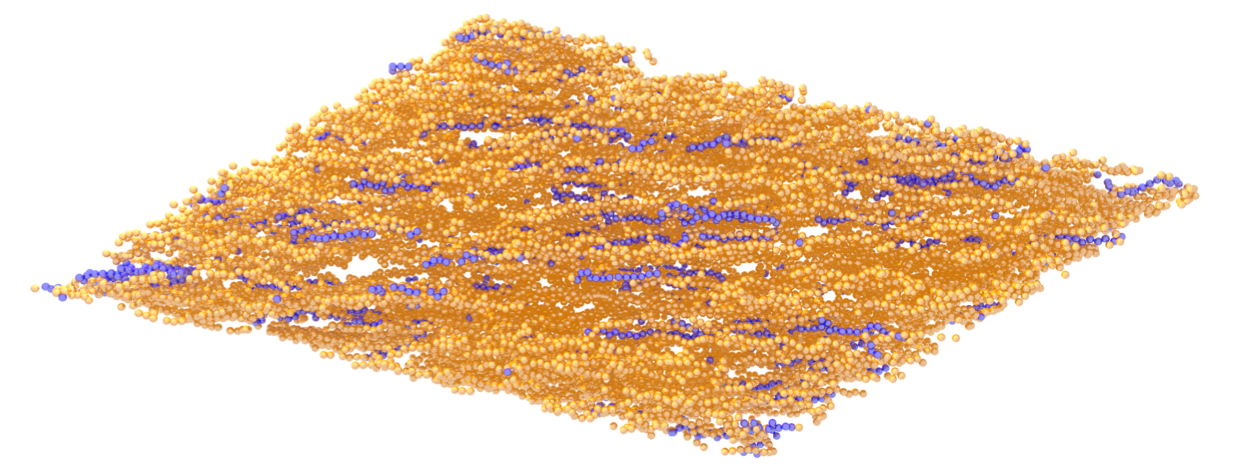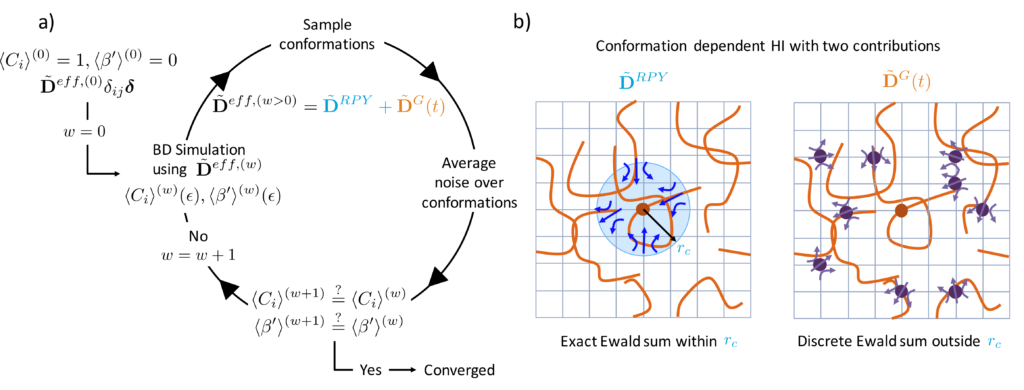
Polymers in Flow
Polymers that are printed, coated, or spun into fibers, are manipulated with the aid of solvents. These flowing solutions can have profound effects on the conformation of individual polymer molecules, impacting final material properties; for example, the mechanical properties of fibers or charge transport properties of spin-coated semiconducting polymers are affected by flow-induced chain conformations. Processing flows are therefore promising as a route to tune or engineer polymer materials at the molecular level, however require understanding of polymer chain conformations in the predominant class of ’semidilute’ solutions, which are characterized by strongly interpenetrating (and interacting) polymer coils. We are interested in untangling the complicated interplay between short-range interchain interactions, topological interactions (i.e. chain hooking), and long-range hydrodynamic interactions that govern semidilute solution dynamics and rheology. We have developed new, highly-efficient computational methods that allow us to understand the polymer dynamics of these systems. Specific areas of interest include branched and ring polymer dynamics, conformational fluctuations driven by local hydrodynamics, and quantifying chain extension due to molecular hooks. We work closely with Prof. Charles Schroeder, who studies these systems using single-molecule methods.
Chain-chain ‘hooking’ can play a key role in the out-of-equilibrium dynamics of semidilute solutions. We are studying how these ‘hooks’ affect molecular conformations in linear, ring, and branched polymers. Collaboration with the Charles Schroeder group seeks to fundamentally understand these effects.

(a) We have developed iterative computational methods that use ‘conformationally averaging’ to speed up calculations of polymer dynamics by orders of magnitude. (b) This method in part relies on separating hydrodynamics into two contributions to the overall diffusion constant. Our conformational averaging method enables us to simulate large, concentrated polymer solutions.
